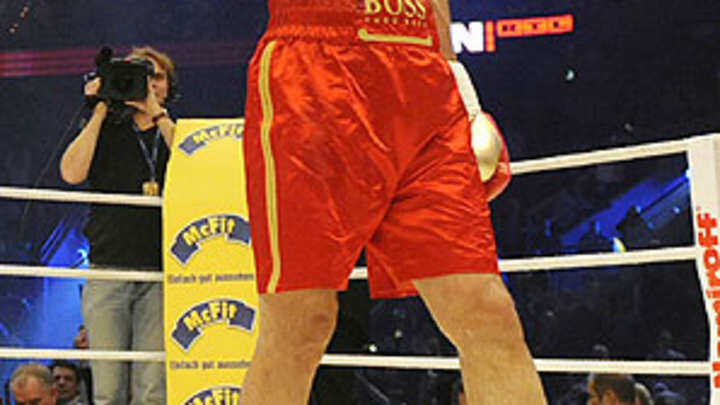Klitschko continues dominance, but when will Americans pay attention?


What we saw Saturday in the heavyweight title fight between Wladimir Klitschko and Hasim Rahman was a clinical dismantling.
We saw Klitschko, the recognized world champion, pumping his left jab with mechanical efficiency from the opening bell. We saw Rahman, the overmatched 11th-hour replacement for Alexander Povetkin, exposed as a fighter without a game plan.
We saw Klitschko tenderize Rahman for five rounds with left-handed jabs and hooks, knocking the challenger down in the sixth and securing a technical knockout victory just 44 seconds into the seventh, when referee Tony Weeks intervened.
It's just too bad so few others saw it with us, as the heavyweight division hardly commands a fraction of the interest among casual sports fans it once did.
The sport's flagship division has long served as a bellwether for the popularity of the sweet science. As the heavyweights go, they say, so does boxing. But as a bloc of Eastern European technicians like Klitschko consolidates power in the division, the sport's status among American sports fans continues to diminish.
On Saturday, the Ukrainian-born Klitschko retained the IBF and WBO belts. His elder brother Vitali holds the WBC title, while Russian seven-footer Nikolai Valuev holds the WBA crown.
In our insular sporting culture, a sport is seldom popular if an American isn't the best. Remember when men's tennis was a hot ticket during the 1990s, when Jim Courier, Pete Sampras and Andre Agassi took turns atop the ATP rankings? Eighteen times the sport was featured on the cover of Sports Illustrated during the '90s, compared to just four times in the nine years since. Soccer, the world's most popular game by light-years, remains a cult sport in the U.S. because our national team is ill-equipped to contend for the World Cup in the foreseeable future. If we're not the best at it, goes the thinking, it's probably not worth doing.
Boxing would seem to be a victim of the same trend, as the dearth of viable American heavyweight contenders -- coupled with the rise of homegrown alternatives like mixed martial arts -- pushes the sport further toward the periphery of the national sporting discussion.
Stateside fight fans may never warm up to Wladimir Klitschko, who turns 33 in March and insists he's entering the prime of his career. He's fought mostly in Germany over the past several years, where he's a huge economic draw. Where Americans tend to embrace aggressive, offensive-minded sluggers, Klitschko is a practitioner of risk management -- the classic outside shooter who relies almost exclusively on jabs and hooks to wear down his opponent. No uppercuts. No body punches. Very few combinations. Almost every offensive is directed upstairs, minimizing the risk of a counterpunch to his jaw.
Thing is, Americans might hate his aesthetic, but it's hard to argue with the results. It's been four years since Klitschko lost a fight. He's 52-3 with 46 knockouts. But he'll never get the respect he deserves among American fans until he defines himself against a great champion.
So who is the Great Red White and Blue Hope, the fighter who could regenerate stateside interest in boxing while helping Klitschko define his legacy? Can it be Chris Arreola, the undefeated prospect from East L.A.? Or Philadelphia's Eddie Chambers, the 26-year-old who suffered his lone professional defeat in a unanimous decision loss to Povetkin in January?
Only time will tell. Here's hoping American fight fans stick around long enough to see it.
